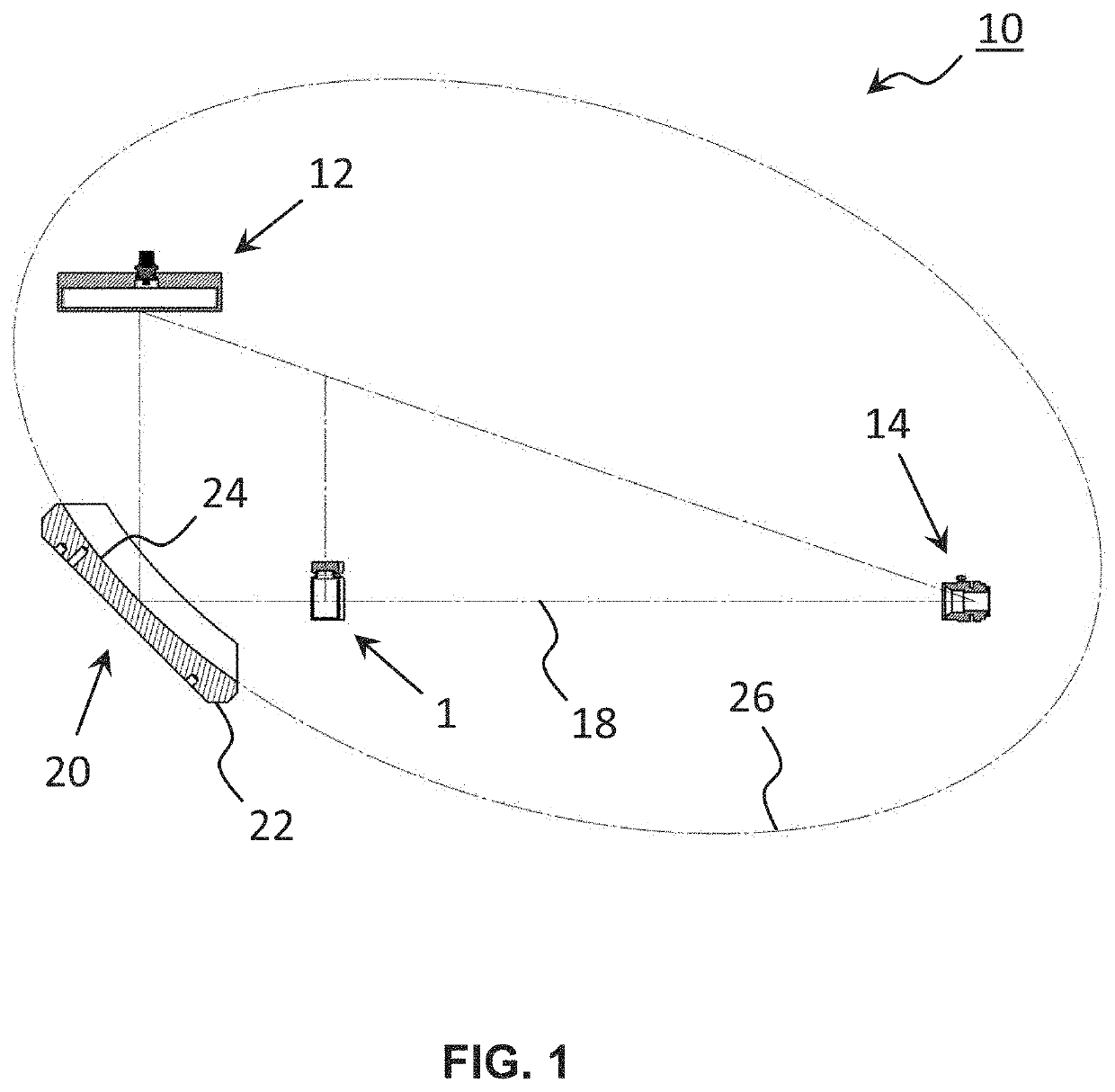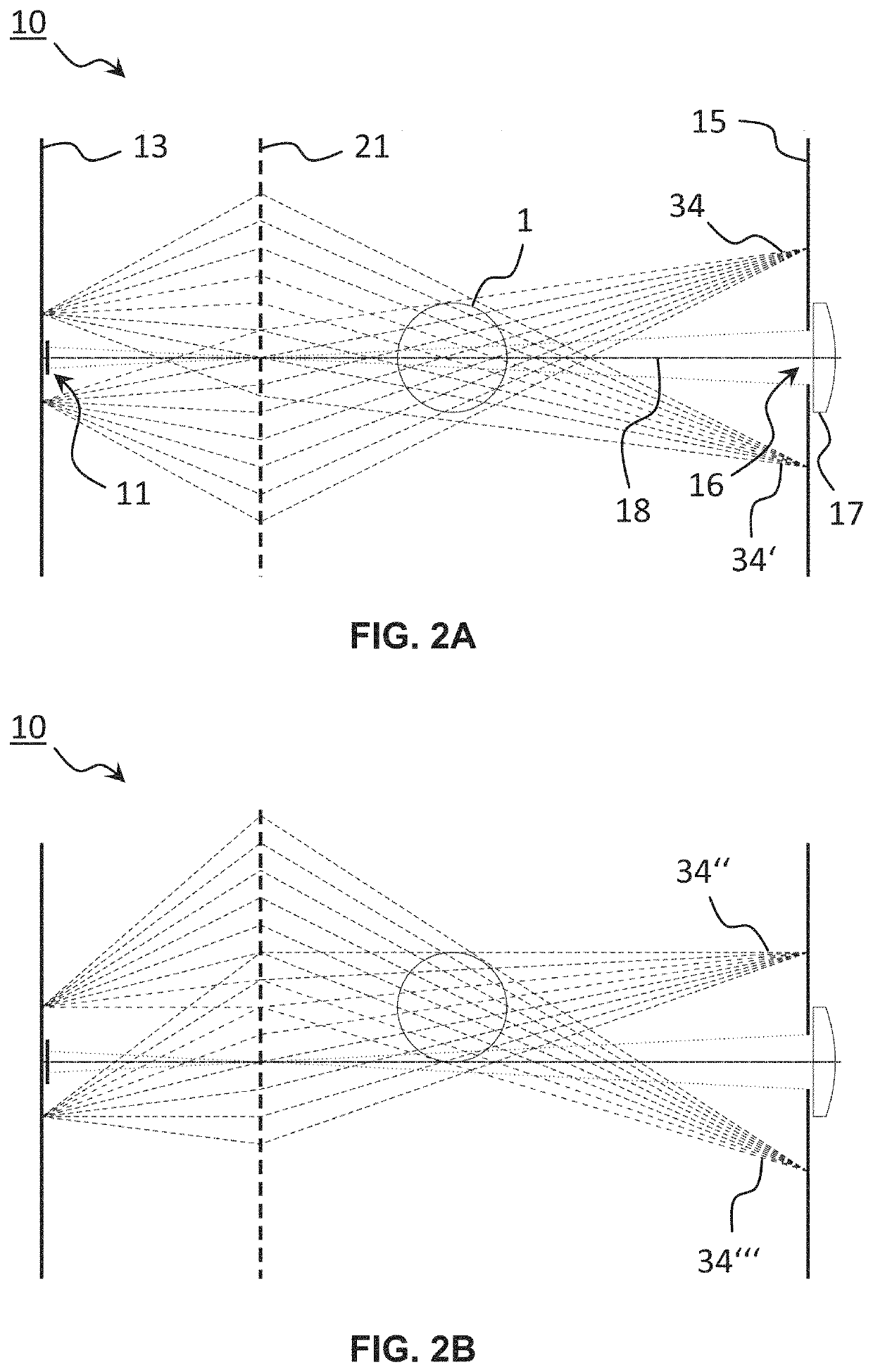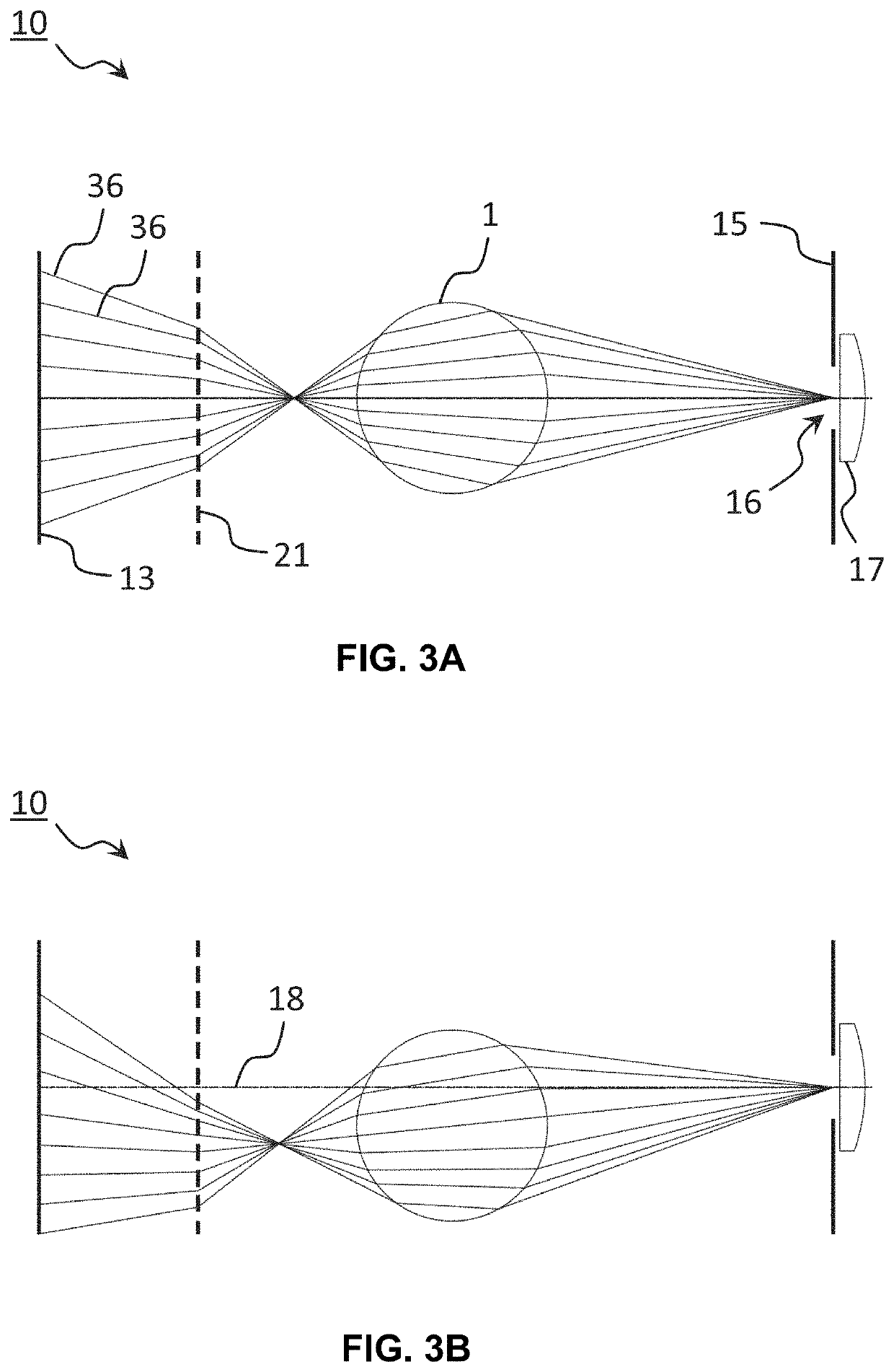Device for optical inspection of empty and liquid-filled containers
a container and optical inspection technology, applied in the direction of measuring devices, material analysis through optical means, instruments, etc., can solve the problems of complex construction of inspection devices, limited maximum apertures, and negative impact on the uniform illumination of containers to be inspected, so as to reduce the probability of failure, reduce the effect of lighting effect and reliable identification
- Summary
- Abstract
- Description
- Claims
- Application Information
AI Technical Summary
Benefits of technology
Problems solved by technology
Method used
Image
Examples
Embodiment Construction
[0092]FIG. 1 is a side view of an embodiment of the device 10 according to the invention as a section along the plane of symmetry of the device 10. The device 10 is used for the automatic inspection of transparent, cylindrical containers 1, in particular medication containers such as ampoules, vials, syringes or cartridges, which may be empty or filled with a partially or completely transparent liquid. The device 10 according to the invention is therefore explicitly suitable for the inspection of cylindrical containers 1 filled with liquid.
[0093]The device 10 comprises an illumination unit 12 comprising an illumination surface 13, which can e.g. be produced by a simple background light comprising a diffuser, a mirror system 20, functioning as a collimator, which comprises a single concave mirror 22 (one-mirror system) and a recording apparatus 14, which comprises a camera and a lens 17. A container 1 to be inspected, which in this case is arranged in the center of the camera field i...
PUM
| Property | Measurement | Unit |
|---|---|---|
| deflection angle | aaaaa | aaaaa |
| deflection angle | aaaaa | aaaaa |
| deflection angle | aaaaa | aaaaa |
Abstract
Description
Claims
Application Information
 Login to View More
Login to View More - R&D
- Intellectual Property
- Life Sciences
- Materials
- Tech Scout
- Unparalleled Data Quality
- Higher Quality Content
- 60% Fewer Hallucinations
Browse by: Latest US Patents, China's latest patents, Technical Efficacy Thesaurus, Application Domain, Technology Topic, Popular Technical Reports.
© 2025 PatSnap. All rights reserved.Legal|Privacy policy|Modern Slavery Act Transparency Statement|Sitemap|About US| Contact US: help@patsnap.com



